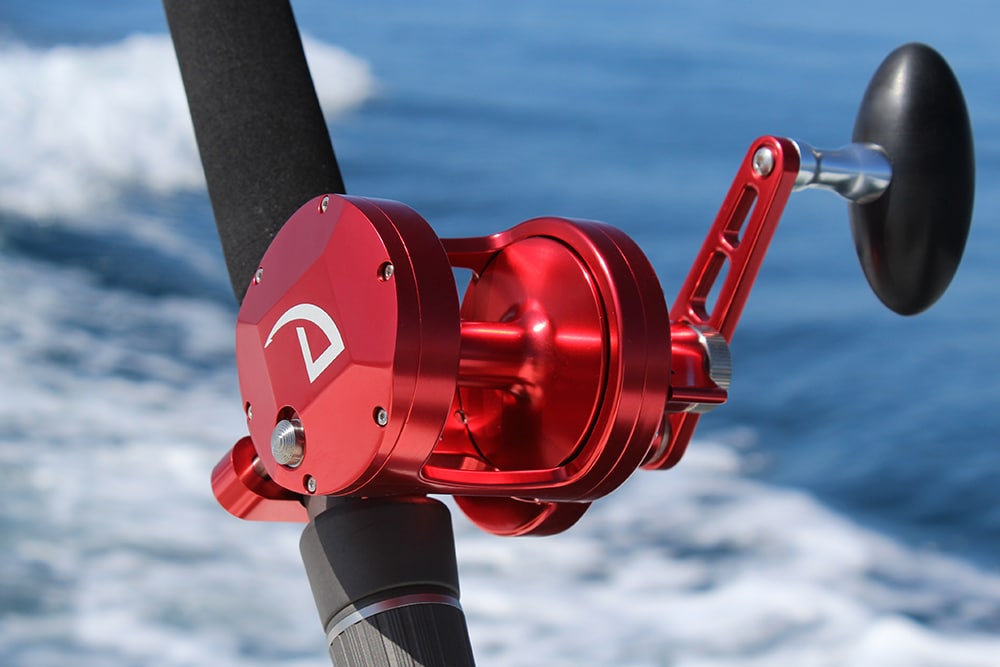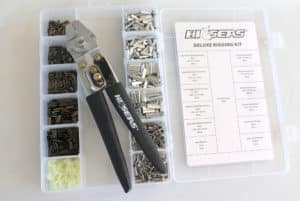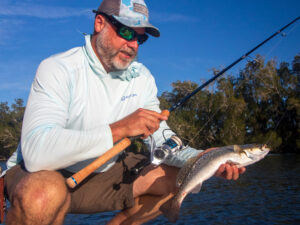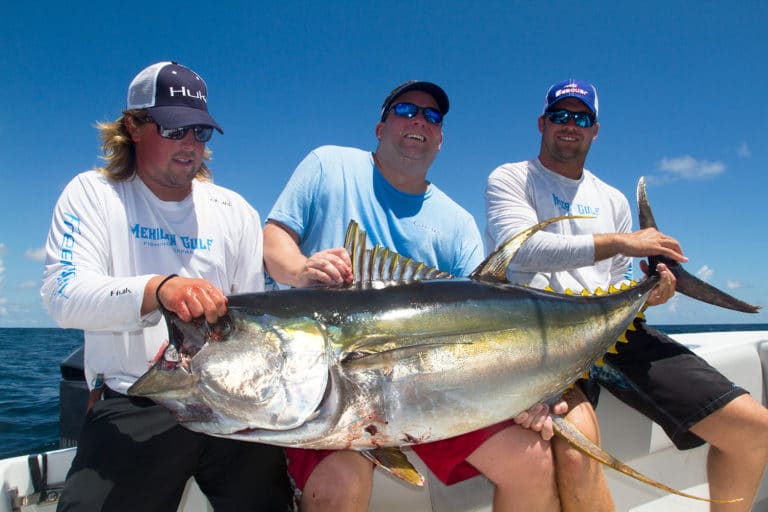Somewhere between fighting grander billfish and casting to spotted bay bass falls the midsize conventional reel. Though it’s tough to define “midsize” precisely, think of it as the reel you grab first when heading offshore for species like mackerel, tuna, grouper, jacks and other fish that weigh 25 to 200 pounds.
I characterize midsize conventionals as reels that hold at least 300 yards of 30-pound monofilament or braid, but aren’t so large that filling the spool with 30- to 50-pound braid would drain the bank account. Even with those parameters, midsize conventional reels are wide-ranging in the features they offer. Manufacturers incorporate specific characteristics such as tweaked gear ratios, different drag options, and distinct build materials to cater to fishermen.
Decide the reel that best fits your style of fishing and your target species, but consider the following factors before purchasing. The truth is that a trendy two-speed might be overkill for you. Then again, that same reel might cover all your blue-water-fishing needs.
Speed Kills
Fishermen and captains are hot for two-speed conventional reels because those reels offer unmatched versatility.
“I really like the Penn International 16 VS two‑speeds when fishing tournaments for kingfish, dolphin, wahoo, blackfin tuna and cobia,” says Capt. George Mitchell, a Penn pro staffer and veteran charter and tournament captain in southeast Florida. “We’ll have up to 16 reels on the boat, all spooled with fluorocarbon, ready for anything. With the drag strength, line capacity and quality materials, I’ve never had a reel failure.”
Two-speed reels differ from single-speeds in that they provide high-gear and low-gear cranking abilities. Two-speeds handle large fish that fight deep and circle, forcing the angler to power them to the surface. Reels with a single, higher-speed gear have trouble in this distinct scenario. The low gear ratio allows greater cranking leverage to handle the weight and strength of large species that fight this way, such as tuna.
Gear ratio plays a key factor when considering conventionals. The ratio explains how many times the spool rotates with just one complete handle turn. That number of rotations then translates to how many inches of line are cranked on the reel, with higher-diameter reels allowing more inches per turn.
“Using Accurate’s Boss BX 400N single speed as an example, its 6-to-1 gear ratio has to be fast enough to jig for species like tunas,” says Ben Secrest, vice president of sales and marketing at Accurate. “But on Accurate’s Boss Dauntless 600 two-speed, the 2.2-to-1 low gear allows max lifting power, while the 5-to-1 high gear allows an angler to gain line quickly.”
Though two-speeds offer flexibility, single speeds definitely have their place offshore. When using light lines under 40-pound-test, a low-gear two-speed might put too much pressure on the line; single-speed reels are an obvious alternative. And when matched with a rod that exhibits “slower” parabolic action, single-speeds are able to add heavy pressure to the fight.
“You want a light tip to cast baits, enough backbone to handle when a fish dives deep, but strong parabolic action to handle heavy loads,” says Secrest. “The rod dictates when to reel, so I’ll watch the tip and wind down on the fish. If you don’t jerk and pump, you can lull fish to sleep with a steady wind.”
Such a Drag
The popularity of lever-drag reels is evident on most dedicated offshore boats nowadays, even if those reels are the more-expensive option. An increasing number of anglers feel that star drags are difficult to adjust reliably during the fight and are tough to “lock down” if a fish is headed for structure.
Let’s consider how the two drag systems work.
“Lever drags are more durable than star drags because the drag is directly on the spool,” says Chris Littau, of Fin-Nor reels, “whereas star drags are on the drive gear and go through the gear system. Large lever drags can get higher drags than equivalent star drags.”
Some of the top reel manufacturers, like Alutecnos, don’t produce reels with star drags. “The Albacore 30 incorporates a carbon-composite drag washer,” says Mason Featherston, the U.S. manager for Italy-based Alutecnos. “Impressive tolerances and special lubricant grease keep the drag smooth. The numbers on the right side of the reel represent all the different drag pressures, while presets on the left side allow anglers to set exact drag settings.”
One big advantage of lever drags is that you can set the strike drag, then move the lever wherever needed, and always go back to the preset strike setting, Littau points out.
So where do star drags fit in?
Star drags shine in two key areas: free-lining live baits and casting lures. “The spool is very light, so casting is easiest,” says Robby Gant, product manager at Shimano. “Also, getting your bait to swim farther away from the boat with a light spool is key — less fatigue on your bait equals more bites.”
Off the West Coast, anglers fish different types of casting lures called “irons.” “These come in many shapes and sizes, but you can cast them a lot farther with star drags such as the Torium 30,” says Gant. “The key is the speed in which these reels retrieve. The Torium 30 is fast, 46 inches of line per crank, to properly ‘yo-yo’ for species like yellowtail.”
Quality Build
Build materials affect the weight and longevity of your reel. The main options available for the frame include machined aluminum, die-cast aluminum or graphite.
“The main advantages of a composite frame are lighter weight and corrosion resistance, which is fine for light to moderate use,” says Bill Liston, of Daiwa. “The biggest disadvantage is that they are less rigid than a metal frame under heavy pressure. Because a composite frame, such as graphite, doesn’t dissipate heat as easily as metal, heat generated by the drag can build up quicker and cause reduced drag performance.”
Most top-end conventional reels are built from high-grade aluminum. The metal frame has the advantage of rigidity, especially with a one-piece frame. “It is much more expensive to produce machined aluminum versus graphite,” says Brandon Cotton, marketing manager at Okuma. “Aluminum is the heaviest, yet the strongest, material to use. For Okuma’s Makaira series, we use quality aluminum materials, in addition to high-quality stainless steel for gearing and shafts.”
A one-piece metal frame helps conduct heat away from the drag and gearbox, and keeps the gear train in alignment for more-efficient cranking and less wear, says Liston. Daiwa’s Saltiga 60 features an aluminum one-piece frame and side plate, machined-aluminum spool and drag lever, and stainless helical cut gears. Inside the frame, components must be strong and resistant — no one likes opening up reels to tinker with broken parts and pieces.
Different reel companies utilize different materials to manufacture dependable interior parts: Shimano incorporates brass main and pinion gears into some of its reels; Alutecnos uses anodized steel for most of its moving parts. Arribe recently released its 1200: a lightweight, single-speed, lever drag. Incorporating lightweight titanium parts and aluminum gears, the 1200 reel handles most species with its aluminum frame, says Danny Uribe, of Arribe Fishing.
Though the reels differ in construction, each company wants to maximize the strength and longevity of its products. The quality and kind of build materials are just part of the equation when picking out your next midsize conventional reel.
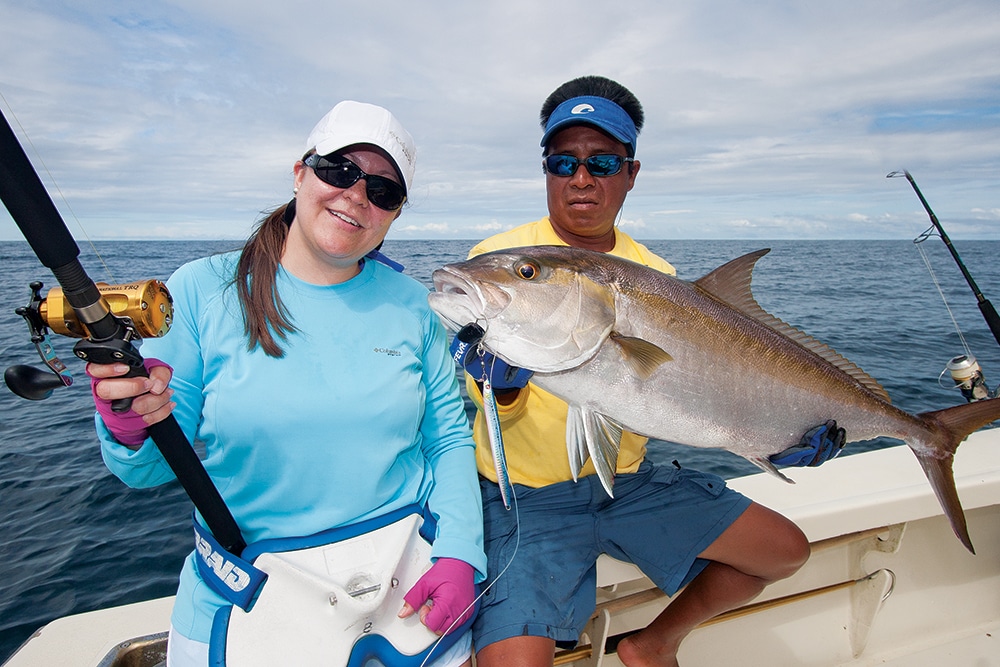
One Size Fits Many
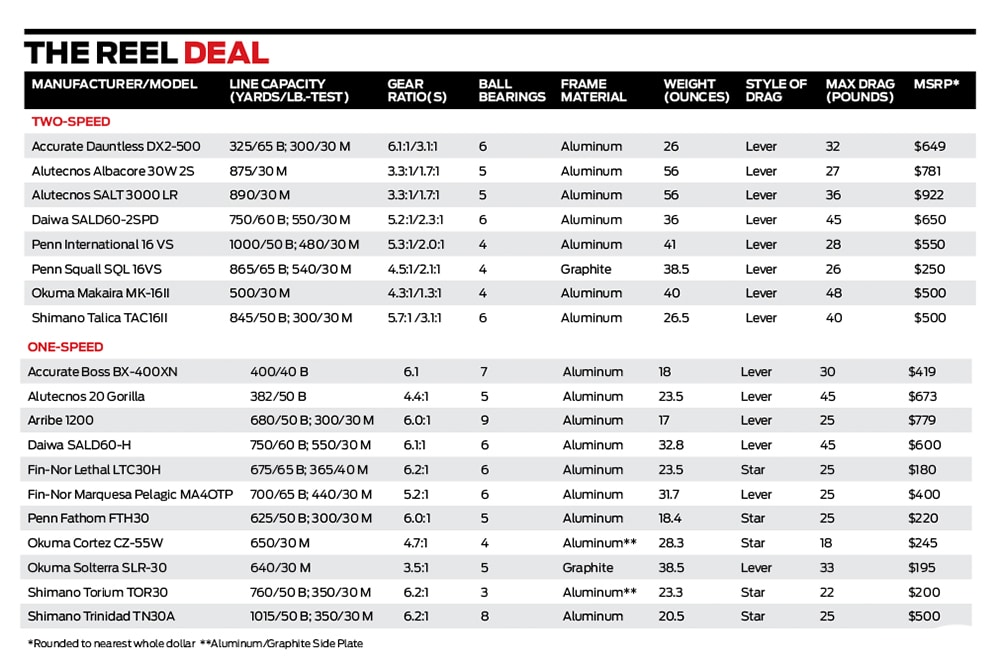
One Size Fits Many
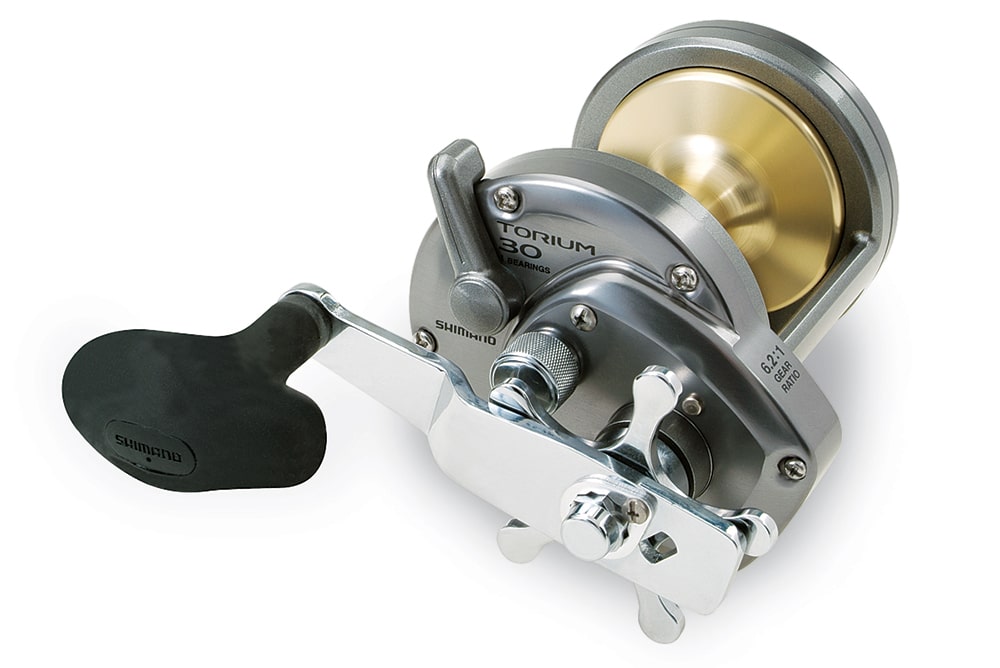
One Size Fits Many
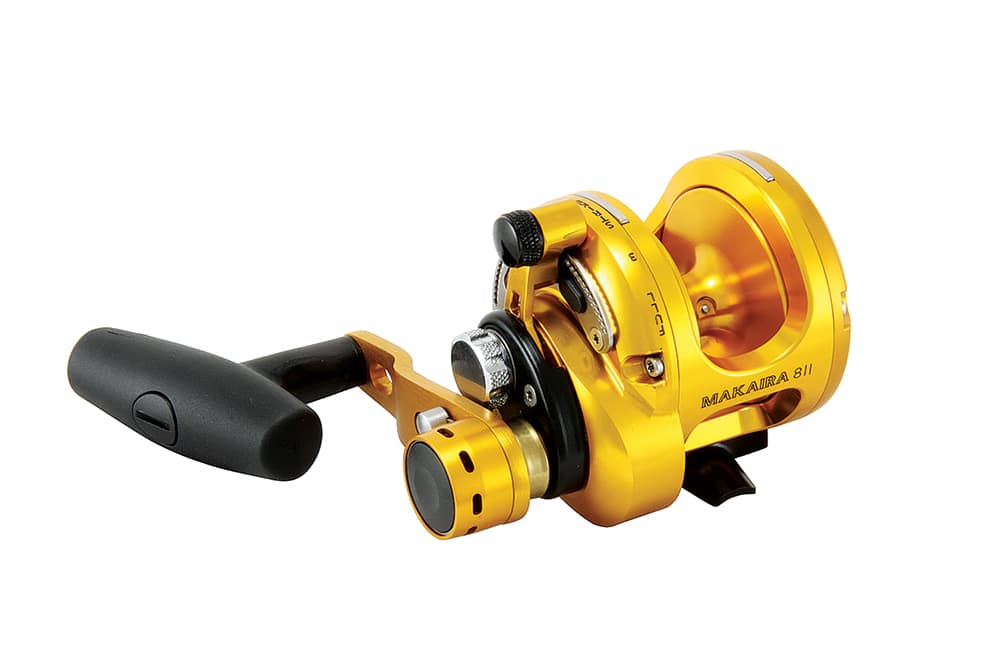
One Size Fits Many
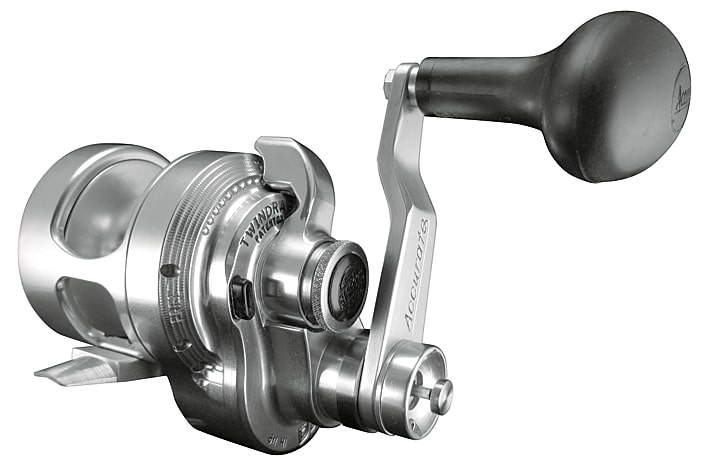
One Size Fits Many
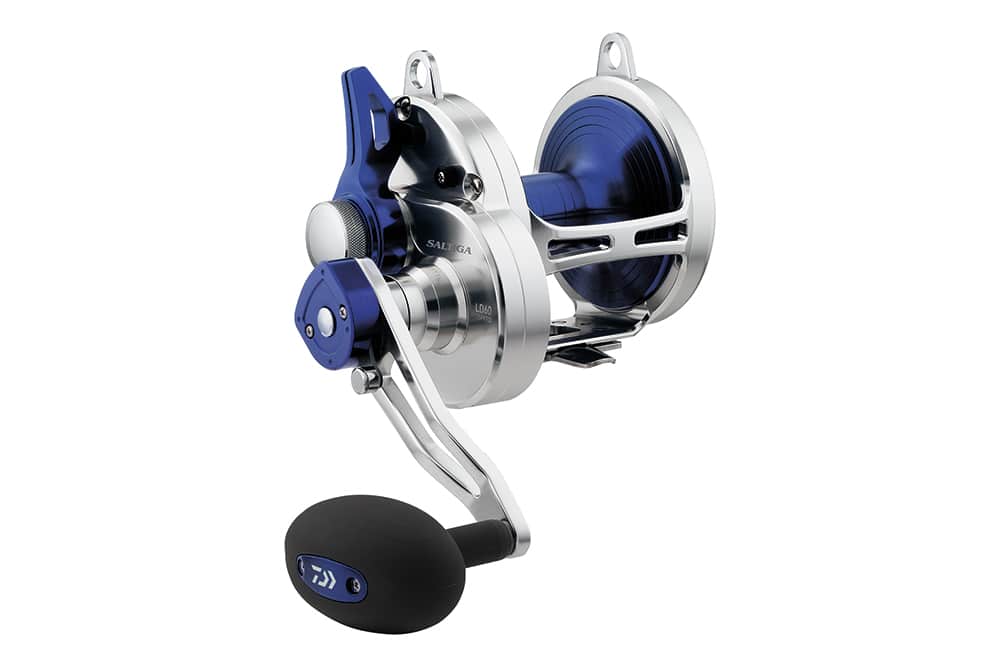
One Size Fits Many
